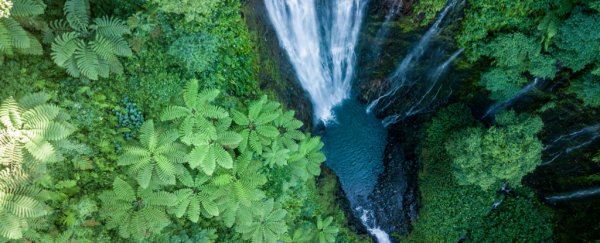A Samoan plant traditionally used to treat fevers, body aches, and 'ghost sickness' could rival ibuprofen, an off-the-shelf painkiller, for its anti-inflammatory properties, new research suggests.
Led by Indigenous Samoan scientist Seeseei Molimau-Samasoni of the Scientific Research Organisation of Samoa, the study suggests the poorly understood but often-used Samoan traditional medicine called 'matalafi' could be as potent as ibuprofen, which works by reducing inflammation.
Matalafi is a small, inconspicuous tree with glossy red berries, also known as Psychotria insularum, that grows along the coasts and in cloud forests of Samoa. Traditional healers use its leaves to alleviate inflammation associated with fevers, swelling, and skin infections, and to treat ailments from supernatural forces.
"There was a lot of superstition around this plant particularly, even in traditional medicine, but I was keen to find out if I could provide scientific merit to the traditional medicines of the Samoan people," Molimau-Samasoni told The Guardian.
Nature is a treasure trove of plants with powerful medicinal properties, which Indigenous peoples have used for millennia, long before modern medicine took notice.
In the past four decades, roughly 1,560 new drugs have been approved, 64 percent of which were extracted, derived from or based on chemicals found in plants and other natural products. Aspirin, the malaria drug artemisinin, and metformin, a first-choice diabetes drug, are some other, historic examples.
But recognising, respecting, preserving and protecting traditional knowledge of Indigenous peoples is crucial, now more than ever. And Samoa, a small Polynesian archipelago in the Pacific Ocean, actually has a long history in that regard.
In 1989, a landmark agreement in Samoa – between traditional healers and researchers who had identified a potential retroviral agent against HIV, prostratin, in the bark of mamala plant – paved the way for access and benefit-sharing agreements that are now enforced under international law and designed to protect against biopiracy.
In this new study, part of her PhD studies at Te Herenga Waka—Victoria University of Wellington, New Zealand, Molimau-Samasoni combined traditional knowledge with chemical and genetic analyses to investigate how matalafi works to reduce inflammation.
In Samoa, traditional healers chop or crush matalafi leaves to make a juice or rub the leaves on people's skin to help heal wounds or treat infections.
Molimau-Samasoni worked with traditional healers to harvest matalafi (and other plants native to Samoa such as fue fue sina), then mashed its leaves up in a blender and shipped the juice to Aotearoa (New Zealand) for testing.
After figuring out that matalafi interacts with iron inside cells using some humble yeast cultures that share a bunch of genes with humans, Molimau-Samasoni then pitted matalafi and its anti-inflammatory properties against ibuprofen in lab-grown immune cells.
"This was the plant I was most sceptical about," Molimau-Samasoni said in a video about her research. "But it turned out to be my most potent extract."
The P. insularum juice and one of its bioactive components, rutin, both reduced fever-inducing pathways while increasing anti-inflammatory responses in freshly-collected immune cells. In these cell experiments, matalafi was "as potent as the anti-inflammatory drug ibuprofen," the team found.
But don't expect matalafi to overtake ibuprofen as one of the mainstays of pain relief. This research is most meaningful for the way it provides molecular insight into traditional knowledge, and for how the local Samoan community were engaged in the research process, Molimau-Samasoni and her colleagues write.
In confirming matalafi's anti-inflammatory properties and identifying how it acts on iron, the team can also speculate about some potential new uses of the traditional medicine that for now, are just an added bonus for traditional healers and need further investigation. They are interested in potential anti- cancer effects of matalafi and other inflammatory diseases.
The researchers also plan to explore how wild and cultivated sources of matalafi might differ in terms of potency while continuing their investigations of other medicinal plants in Samoa and nearby Pacific Islands.
"I believe we've just started to unravel the potential of matalafi," Molimau-Samasoni said when speaking to The Guardian. "But there's also honestly hundreds of other traditional medicines here in Samoa to research."
Another reason to protect the world's biodiversity.
The study was published in PNAS.
